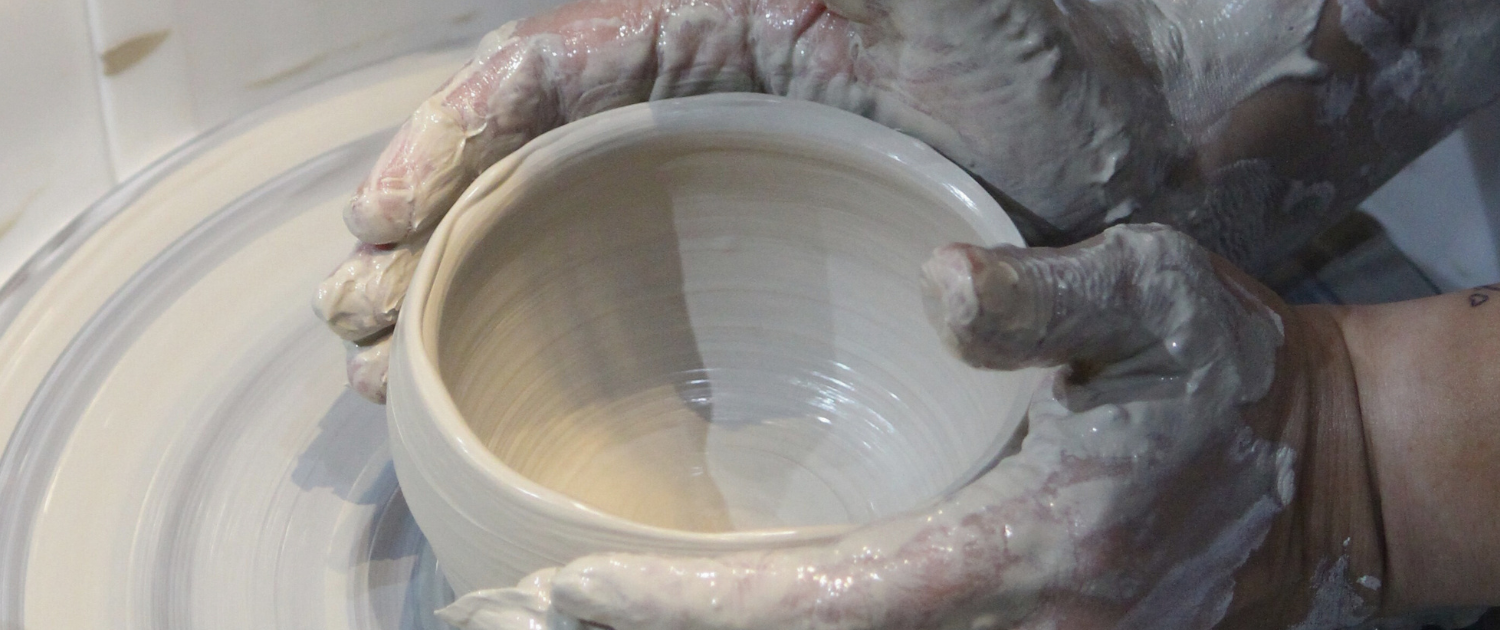Full Wheel Throwing Pottery Class
IDR 400,000 / Person
2 Day Class
Get hands-on experience with 1 kg of clay, enough to create two unique potteries
Day 1 – Craft stunning piece of art on pottery wheel
Day 2 – Colour your stunning pieces
All tools are provided during the class
Colouring & firing are included in this package
Interested to learn?
Sign up for the classes
Check out our pottery class which are conducted in English/Bahasa
What you will learn in a Wheel Throwing Pottery Class
- Basic Wheel Techniques: You begin by learning the fundamentals of wheel throwing, including centering the clay, opening the form, and pulling the walls up. Each of these steps requires practice, as the clay must be coaxed into shape with precise movements and consistent pressure. Mastering these skills is a journey of trial, error, and improvement.
- Clay Behavior and Craftsmanship: As you work with clay, you’ll become attuned to how it responds to your touch. You’ll learn to listen to the material, understanding its texture, its resistance, and its malleability. This connection between the artist and the clay is at the heart of pottery—learning when to push and when to yield, when to keep going and when to let go.
- Form and Design: While wheel throwing starts with a basic form (often a bowl, cup, or vase), you also learn to explore more complex shapes and designs. You’ll experiment with altering the form, trimming excess clay, adding texture, or creating unique features that imbue your pieces with character. The process encourages creativity and self-expression.
- Patience and Precision: Pottery is a slow, deliberate craft. You’ll develop patience as you learn to work with the material, adjusting to the time and care needed for each stage. Whether it’s centering the clay or waiting for the piece to dry before firing, patience is a constant theme in wheel throwing.
- Mindfulness and Focus: The act of throwing on the wheel is meditative, requiring full attention to the present moment. The rhythmic motion of the wheel and the tactile connection with the clay can bring a sense of calm and focus. Many students report feeling a deep sense of tranquility and mental clarity while working.
Who the class is for?
- Beginners and Novices: Wheel throwing classes are often designed to cater to people with no prior experience in pottery. Instructors break down each step into manageable parts, and everyone starts from the same place. With practice, even the most inexperienced students can create beautiful, functional pieces.
- Creative Seekers: People interested in exploring new forms of self-expression or connecting with their artistic side find wheel throwing to be a fulfilling outlet. The tactile nature of working with clay is particularly appealing to those who enjoy hands-on, physical creative processes.
- Mindfulness Enthusiasts: Anyone looking to escape the fast pace of modern life will find the quiet, meditative quality of wheel throwing to be deeply rewarding. It offers a space to unplug, focus inward, and connect with the present moment through tactile interaction.
- Therapeutic or Stress-Relief Seekers: Many people turn to pottery for its calming and therapeutic qualities. The repetitive motions and focus required on the wheel can help relieve stress, reduce anxiety, and offer a therapeutic outlet for emotions.
- People Who Enjoy Craftsmanship: Those with an appreciation for the finer details and the satisfaction of working with their hands may find wheel throwing particularly rewarding. It’s a process that combines craftsmanship, artistry, and personal skill development.
Your takeaways from the Wheel Throwing Pottery Class
In essence, a wheel throwing pottery class is an opportunity to reconnect with the earth, with your creative instincts, and with the process of making something from nothing. It’s for anyone eager to explore their creativity, relieve stress, and engage with a timeless craft. Through the process, you don’t just create pottery—you discover new layers of patience, mindfulness, and self-expression.
FAQ
The main difference between handbuilt pottery and wheel throwing pottery lies in the techniques used to shape and form the clay. Both methods result in beautiful, functional ceramic pieces, but they offer distinct approaches, aesthetics, and creative possibilities.



